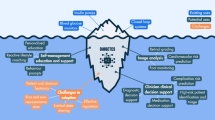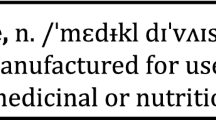Opinion statement
Electronic cardiac implants such as pacemakers, cardioverter-defibrillators, and cardiac resynchronization devices improve survival, as evidenced by recent trials for primary and secondary prevention and for cardiac resynchronization therapy. As with other forms of therapy, an important aspect of care is monitoring the patient’s condition, response to therapy, and system function. However, practice has been inconsistent. Follow-up schedules vary—for example, from every 3 months to once a year—according to facility, physician preference, and availability of resources. Importantly, no surveillance occurs between follow-up visits. In contrast, implantable devices with remote monitoring capability provide a means for performing constant surveillance, with the ability to identify salient problems rapidly. Preliminary data from the TRUST (Lumos-T Safely Reduces Routine Office Device Follow Up) study demonstrate that this technology provides a means for efficient monitoring and an opportunity to enhance patient safety by early detection of patient and/or system problems. Remote monitoring likely will become incorporated into the standard of care in cardiac implantable electronic devices.
Similar content being viewed by others
References and Recommended Reading
Wilkoff BL, Auricchio A, Brugada J, et al.: HRS/EHRA expert consensus on the monitoring of cardiovascular implantable electronic devices (CIEDs): description of techniques, indications, personnel, frequency and ethical considerations. Heart Rhythm 2008, 5:907–925.
Joseph GK, Wilkoff BL, Dresing T, et al.: Remote interrogation and monitoring of implantable cardioverter defibrillators. J Interv Card Electrophysiol 2004, 11:161–166.
Schoenfeld MH, Compton SJ, Mead RH, et al.: Remote monitoring of implantable cardioverter defibrillators: a prospective analysis. Pacing Clin Electrophysiol 2004, 27:757–763.
Varma N, Stambler B, Chun S: Detection of atrial fibrillation by implanted devices with wireless data transmission capability. Pacing Clin Electrophysiol 2005, 28(Suppl 1):S133–S136.
Varma N: Rationale and design of a prospective study of the efficacy of a remote monitoring system used in implantable cardioverter defibrillator follow-up: the TRUST study. Am Heart J 2007, 154:1029–1034.
Varma N, Epstein A, Irimpen A, et al.; TRUST Investigators: Evaluation of efficacy and safety of remote monitoring for ICD follow-up: the TRUST trial [abstract 4078]. Circulation 2008, 118:2309–2317.
Varma N, Epstein A, Irimpen A, et al.; TRUST Investigators: Early detection of ICD events using remote monitoring: the TRUST trial. Heart Rhythm 2009, 6:S73.
Varma N, Johnson N: Prevalence of cancelled shock therapy and relationship to shock delivery in recipients of implantable cardioverter defibrillators assessed by remote monitoring. Pacing Clin Electrophysiol 2009, 32(Suppl 1):S42–S46.
Varma N: Remote monitoring for advisories: automatic early detection of silent lead failure. Pacing Clin Electrophysiol 2009, 32:525–527.
Theuns DA, Rivero-Ayerza M, Knops P, et al.: Analysis of 57,148 transmissions by remote monitoring of implantable cardioverter defibrillators. Pacing Clin Electrophysiol 2009, 32(Suppl 1):S63–S65.
Arya A, Block M, Kautzner J, et al.; IN-TIME investigators: Influence of home monitoring on the clinical status of heart failure patients: design and rationale of the IN-TIME study. Eur J Heart Fail 2008, 10:1143–1148.
Author information
Authors and Affiliations
Corresponding author
Rights and permissions
About this article
Cite this article
Varma, N. Therapeutic implications of automatic home monitoring of implantable cardiac devices. Curr Treat Options Cardio Med 11, 366–372 (2009). https://doi.org/10.1007/s11936-009-0037-1
Published:
Issue Date:
DOI: https://doi.org/10.1007/s11936-009-0037-1




